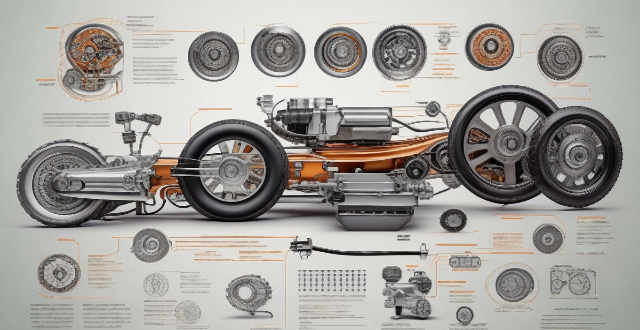Hub motors, integral to electric vehicles, operate on electromagnetic principles and Lorentz force. Key components include the stator, rotor, bearings, and controller. When current flows through the stator coils, a magnetic field is generated, which interacts with the rotor's permanent magnets, causing rotation that propels the vehicle. Hub motors are efficient, quiet, and require less maintenance due to their direct drive mechanism and fewer moving parts. However, they can add weight and present cooling challenges. Advancements in technology are expected to enhance their benefits and address limitations.

How Does a Hub Motor Work?
Hub motors are an essential component of electric vehicles, particularly those designed for urban commuting. These motors are integrated directly into the wheel hubs, eliminating the need for traditional drivetrain components like gears, chains, or shafts. Let's delve into the working principles of a hub motor:
Basic Principle
At its core, a hub motor operates on the principles of electromagnetism and Lorentz force. The motor consists of several key components:
- Stator: The stationary part of the motor containing coils of wire that produce a magnetic field when an electric current is passed through them.
- Rotor: The rotating part of the motor with permanent magnets attached to it.
- Bearings: Support the rotor and allow it to spin smoothly within the stator.
- Controller: Regulates the amount of electricity flowing to the motor, thereby controlling its speed and torque.
Working Mechanism
When an electric current flows through the stator coils, it generates a magnetic field. This magnetic field interacts with the magnetic field of the rotor's permanent magnets. The interaction causes the rotor to rotate, which in turn rotates the wheel hub and propels the vehicle forward.
Key Points:
- Electromagnetic Induction: The flow of current through the stator coils induces a magnetic field.
- Lorentz Force: The interaction between this induced magnetic field and the magnetic field of the rotor generates a force that causes the rotor to move.
- Speed Control: The controller varies the frequency and amplitude of the current to control the motor's speed and torque output.
- Efficiency: Hub motors are generally more efficient than traditional motors due to fewer moving parts and less energy lost through heat and friction.
- Direct Drive: Since there are no gears or chains involved, hub motors offer a direct drive mechanism, reducing maintenance requirements and noise levels.
Advantages of Hub Motors
- Simplicity: Fewer parts mean easier assembly and reduced maintenance.
- Efficiency: Direct drive systems convert electrical energy into mechanical energy more efficiently.
- Space Saving: Integrating the motor into the wheel hub saves space in the vehicle design.
- Performance: They can provide instant torque, resulting in quick acceleration.
- Quiet Operation: Electric motors are naturally quieter than internal combustion engines.
Disadvantages of Hub Motors
- Weight: Adding motors to each wheel can increase unsprung weight, affecting suspension performance.
- Heat Dissipation: Being enclosed within the wheel hub can make cooling challenging.
- Cost: Higher initial cost compared to conventional drivetrains.
- Repair Difficulty: While they require less maintenance, when issues do arise, repairs can be complex and costly.
In conclusion, hub motors represent a significant advancement in electric vehicle technology by offering simplicity, efficiency, and performance benefits. As technology continues to evolve, we can expect further improvements in hub motor design that will enhance their advantages and mitigate their drawbacks.